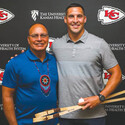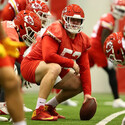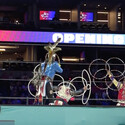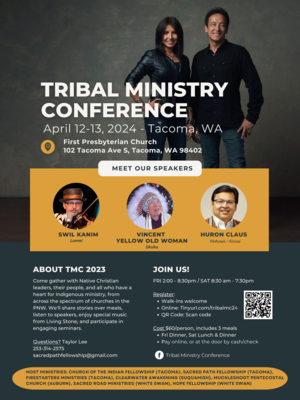Super Bowl LVII highlights Indigenous culture
Last updated 3/17/2023 at 1:29pm

courtesy of the National Football League
Phoenix-based artist Lucinda Hinojos with her featured design. This was the first time an Indigenous artist's works were featured at the Super Bowl.
KANSAS CITY, Mo.-The Super Bowl LVII held in Glendale, Ariz. in February offered unprecedented opportunities for showcasing Native Americans this year.
In the days before the game between the Kansas City Chiefs and Philadelphia Eagles even started, Indigenous artist Lucinda "La Morena" Hinojos was the first Native artist to be selected by the NFL to create the official artwork, which was featured on each of the 60,000 game tickes, as well as on the game ball and around the stadium. She also worked with Wilson Sporting Goods on a football design.
The NFL also commissioned Hinojos to complete the largest mural in Super Bowl history at 9,500-square-feet on the Monarch Theatre in Phoenix, aided by Indigenous artists Randy Barton, Anitra Molina, and Carrie Curley.
NFL officials described her key design as an "elaborate, deeply meaningful piece" that shows the iconic White Tank Mountains reflected in the traditional Vince Lombardi trophy, surrounded by Indigenous and Azteca dancers, corn, hummingbirds, baskets and cactus.
"Lucinda's insight and direct, personal connection to the amazing and diverse history in Arizona made her the perfect partner for this project," Marissa Solis, the NFL's senior vice president of global brand and consumer marketing, said.
As NFL officials and players arrived in the city, they were greeted by Super Bowl Host Committee Partners who were assigned from Ak-Chin Indian Community, Fort McDowell Yavapai Nation, Gila River Indian Communities, and Tohono O'odham Nation. The Philadelphia Eagles team and other officials stayed at the Sheraton Grand resort in the Gila River Indian Community.
As part of hospitality, Diné and Ho-Chuck citizen Nedallas Hammill, the 2020 Teen World Champion Native American hoop dancer performed for NFL executives. He started with five hoops and advanced all the way to 13, though at one point, he even incorporated as many as 28.
"The Ho-Chunk tribe's story is about a warrior's journey," explained Hammill. "A warrior went out because he felt lost. Throughout his journey, he discovered many things of beauty and nature; the eagle taking flight, the butterfly coming out of the cocoon, the flower, sun, moon and stars. When he got back to the village, he wanted to tell his people what he saw, but he couldn't put it into words and instead he crafted the hoops to tell his story."
Navajo artist Randy Barton, who was recognized at Super Bowl events, not only assisted with the mural on the Phoenix Monarch theater, but he also created a digital design that premiered when Philadelphia and Kansas City players took the field on Sunday. He created an animated traditional Navajo rug design that "looks like it's exploding, it's really dope," he said to Indian Country Today. He also created end zone designs and some ribbon designs that were visible on the field.
"The inspiration comes from being a young kid growing up on the reservation, watching my grandmother weave rugs," he said. "So I kind of took those same designs, them eye dazzler designs and brought them to life and animated them digitally."
At the opening night, the Indigenous dance troupe, Indigenous Enterprise, made history as the first Native group to perform at a Super Bowl celebration opening night.
Before the game started, in another historic move, the NFL read a land acknowledgment. "We believe it is consistent with our commitment to diversity, equity, and inclusion to acknowledge the sovereignty and the traditional territories of these tribal communities and understand the historical and current experience of native peoples," said Peter O'Reilly, executive vice president of Club Business and League Events for the NFL.
The NFL also participated in the Inspire Change social justice campaign to help community organizations, including Native American Connections, to provide laptop computers for hundreds of Native children.
At the game itself, Native Americans were featured in various ways. At the beginning of the game, Collin Denny signed the National Anthem with a blend of American Sign Language and North American Indian Sign Language.
Growing up as a deaf person on the Navajo Nation, Colin Denny says he often felt isolated because the reservation didn't have interpreters to provide him access to public school classes and had no other deaf friends to share common experiences.
So, Denny, now a research assistant in the College of Education at the University of Arizona, took the stage at the pregame show, hoping to show other Native American deaf people across the country that they were not alone.
He performed "America the Beautiful," using a mix of American Sign Language and North American Indian Sign Language, alongside the singer Babyface.
"I just want to be able to inspire and empower those who are on their own to look around and see that there are other people out there who are just like them," Denny said through an interpreter. "I want them to see me on that stage and see that I'm representing them."
Denny also hopes his performance will raise awareness of North American Indian Sign Language, which he is working to help preserve and teach through his work.
Native Americans were also featured on the field at the main event: the Super Bowl LVII game.
Cherokee Nation citizen Jerod Phillips was chosen as a down-judge official for the game, only the second Native American to ever officiate the Super Bowl.
The Kansas City Chiefs team included two Native Americans in their lineup. Long snapper James Winchester is a Choctaw Nation citizen, and Chiefs' center Creed Humphrey is a citizen of the Potawatomi Nation.
Winchester went from youth football to the University of Oklahoma, where he played from 2008 to 2011. Winchester is now in his eighth year in the NFL. Winchester played his third Super Bowl in four years and has now won two rings.
"It's incredible to make it to the game and have an opportunity," he said. "It's a long season, super proud of my teammates and it's just a blessing to get to play for another world championship."
Creed Humphrey is a Citizen Potawatomi Nation tribal member and center for the NFL's Kansas City Chiefs. At only 23 years old, he played his second season of professional football in 2022–23, ending with his first Super Bowl appearance this year. When asked by the Citizen Potawatomi Nation what is was like representing the tribe as a professional athlete, he responded, "It's great. There's not a ton of representation with Native Americans throughout sports. So being able to do that and kind of just be a person for younger kids to look up to, it's really great to do. And I'm very happy to be able to do that."
Philadelphia and Kansas City were the league's only 14-game winners, marking just the sixth time since the 1970 merger that the squads with sole possession of the two best records in the regular season met for the championship. The Super Bowl ended up being the third most-watched in NFL history.
However, not everyone enjoyed the championship game. Throughout the week preceeding the Super Bowl and during the game, Indigenous groups and individuals were also on hand, protesting the Chiefs, calling for them to change their name and other Indigenous elements of their team franchise.
However, the origin of the moniker is said to have more to do with the mayor who helped lure the franchise from Dallas in 1963 than a connection to Native Americans. H. Roe Bartle, Kansas City's mayor at the time, was known as "The Chief" for his many years of Boy Scout leadership. Team owner Lamar Hunt reportedly named the team the Chiefs in honor of Bartle. Chiefs President Mark Donovan has said that Bartle was given permission from the Northern Arapaho Tribe to use the term "chief." It is not known if Bartle was also given permission to appropriate elements from Native culture during his scouting leadership, where he created the honor "tribe" of Mic-O-Say.
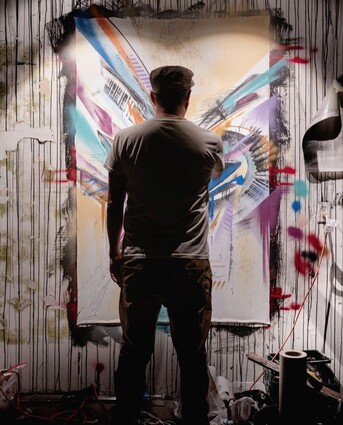
Screengrab from Randy_Boogie on Instagram
Randy Barton created digital images based on his memory of his Navajo grandmother weaving rugs.
"While the origin of the team's name has no affiliation with American Indian culture, much of the club's early promotional activities relied heavily on imagery and messaging depicting American Indians in a racially insensitive fashion," the team's website says. "Over the course of the club's 60-plus-year history, the Chiefs organization has worked to eliminate this offensive imagery and other forms of cultural appropriation in their promotional materials and game-day presentation."
In 2014, the Kansas City Chiefs issued a ban on fans wearing faux tribal headdresses, face painting to resemble war paint and other faux Indigenous garb at its home stadium. They also had cheerleaders change the tomahawk chop by using a closed fist instead of an open palm in hand movements. They also retired the mascot, a horse named Warpaint that was ridden around the stadium after the team scored. The current mascot is the KC Wolf. However, the team still allows a ceremonial drum banging at the beginning of each game. And fans repeatedly call out a faux "Native American" war chant.
Depending on perspective, it was either ironic or appropriate for the Chiefs to win the game 38 to 35.
